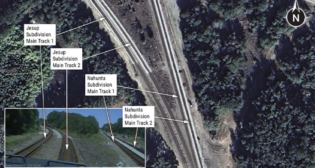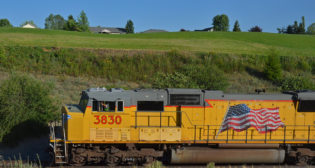
AAR to FRA: No basis for two-person crews
Written by Carolina Worrell, Senior EditorCiting the Federal Railroad Administration’s (FRA) acknowledgement of “little evidence or safety data” in its attempt to mandate two-person train crews, a proposed rule first announced by the FRA in April 2015, Association of American Railroads President and CEO Edward R. Hamberger said, “Safety is this industry's number one concern, but there is simply no safety case to be made for a regulation that requires two-person crews, especially where Positive Train Control is fully operational." The rule was published in the Federal Register on March 15, 2016, and public comments are due on May 16.
“Worldwide, trains safely operate with one person in the cab, including here in the United States with passenger and commuter trains and some short line freight railroads. Major European railway systems running many mixed freight and passenger trains per day have safely implemented single-person train crews,” Hamberger added.
“Coming from an administration that champions smart, data-driven regulations, it is inexplicable how this proposal was approved by the President’s Office of Management and Budget,” Hamberger said. “Even the FRA concedes they have no ‘reliable or conclusive statistical data’ to suggest that two-person crews are safer. I encourage the FRA to reexamine the facts and exercise sound regulatory judgment before finalizing a rule that lacks empirical support.”
Hamberger pointed out Class I freight railroads remain committed to two people in the cab for trains operating on main line track that is not equipped with Positive Train Control (PTC). PTC will be in operation for 60,000 out of the nation’s 140,000-mile freight rail system.
“Notwithstanding an extensive body of evidence showing that two-person crews are no safer than one-person crews, the nation’s Class I freight railroads currently operate with two-person crews, and have committed to continuing that practice for trains without PTC systems in place,” Hamberger stated. “PTC is designed to provide continuous monitoring of train operations to protect against human error in controlling train speeds and movements. This is exactly the kind of safety redundancy through technology for which the FRA has long advocated.”
Hamberger also noted with irony that the proposed rule “comes from the Department of Transportation (DOT) at the same time as that agency is enthusiastically promoting autonomous vehicle technology, which would facilitate platoons of unmanned* trucks on our nation’s highways. The same DOT is determining concrete guidelines for driverless* cars, but offers absolutely no guidance to the railroads to move to one-person crews.”
“The freight rail industry is spending billions to automate operations inside freight locomotives. Instead of piling on additional, duplicative regulatory costs that offer no incremental safety benefit, the government should focus on creating an environment that fuels innovation and technological advancement in furtherance of safety,” concluded Hamberger.
Additionally, at a hearing on June 2, 2015, National Transportation Safety Board (NTSB) Chairman Christopher A. Hart stated that the board hadn’t found two-person crews to be an improvement over single-person crews.
* Editor’s note: Autonomous trucks are not “unmanned.” The truck operates automatically on highways equippped with a control/guidance system, much like ATO (Automatic Train Operation) on a rapid transit system. There is a single “driver” in the tractor cab whose function is to monitor the truck’s operation, and drive it manually off-highway (once the vehicle leaves the automatic zone). The same applies to “driverless” automobiles, which would operate automatically on highways equipped with the technology. This technology, as envisioned by the DOT, would be deployed only on the Interstate Highway system. AAR is correct, however, in pointing out that an agency that embraces autonomous vehicles is attempting to mandate two-person train crews when there is no safety case supporting this, especially where PTC is deployed. — William C. Vantuono



